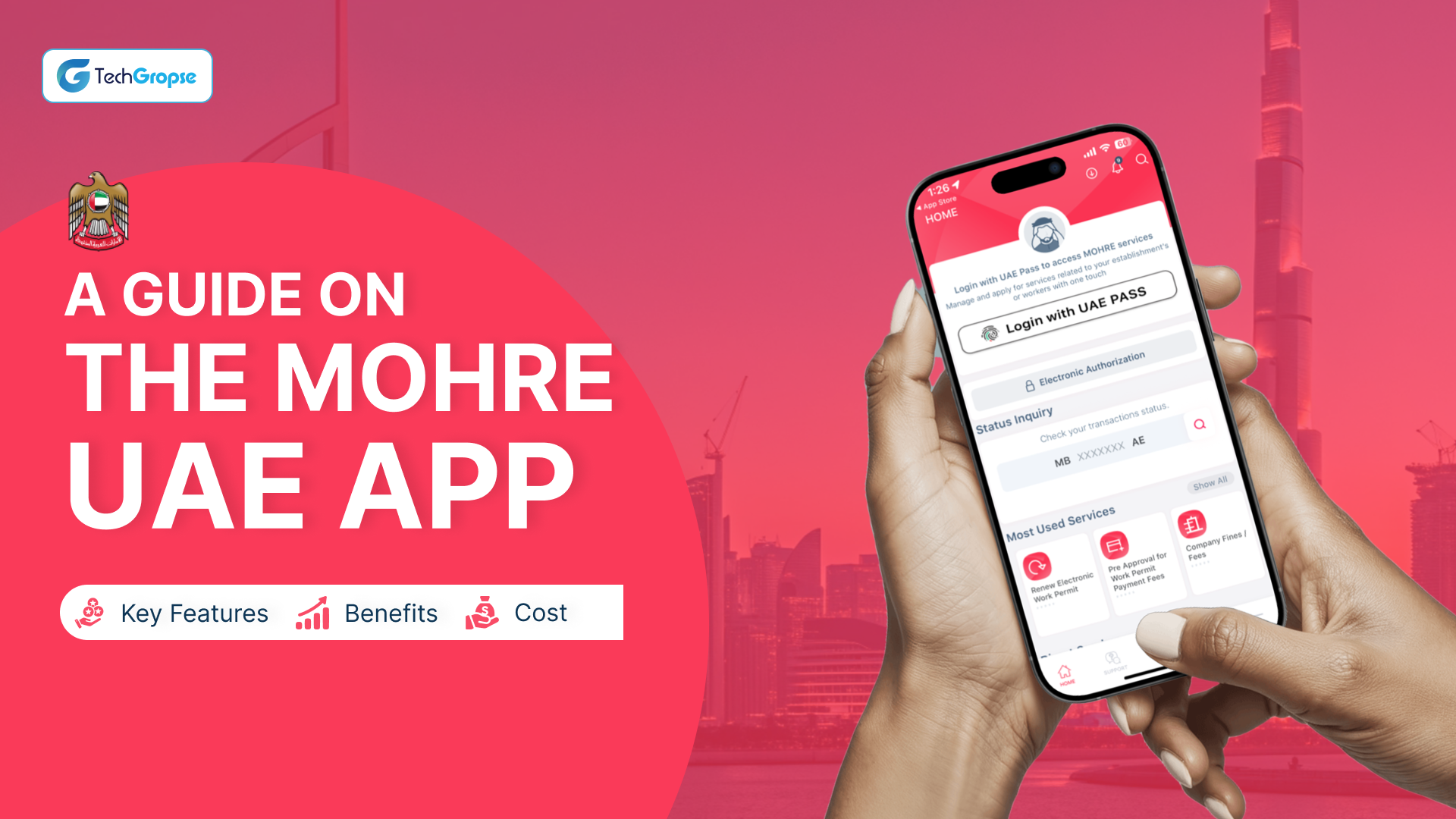AMP is an open-source HTML framework created by the AMP open-source project while PWA is a kind of software delivered through the web, made by basic web technologies using HTML, CSS and Javascript. AMP is optimized for mobile web browsing and made to help webpages to load faster.
Overview
The web has enlarged its development process drastically in a few years. The major problem faced by users is unreliability and slow web pages. The technologies like PWA vs AMP have come into existence to resolve such issues. These accelerated mobile pages vs progressive web apps promise to deliver an immersive experience which highly engages users. In a few years, mobile app development has drastically grown in various industries so the coming of both technologies has become a blessing for all of us.
Nowadays, more than half of the traffic comes from mobile devices so developers and mobile app development companies have shifted their focus from websites to mobile web pages. They introduced tools like AMP or PWA to optimize mobile web pages in terms of reliability and page speed. IN this article, we will discuss why we need PWA vs AMP, their definitions, features, benefits, and so on. Let’s begin!
What is an AMP?
AMP is abbreviated as Accelerated Mobile Pages.
Definition
Accelerated Mobile Pages or AMP is an open-source project backed by Google that enables developers to build mobile web pages that loads content faster and improve the user experience. The AMP is developed on Javascript which delivers an immersive experience than regular HTML. Google incorporated AMP into mobile searches in the year 2016. Those mobile pages which use AMP features on SERP with an AMP designation.
In order to create mobile-friendly websites, unnecessary javascript is removed. Google caches the content of websites to deliver CDN-like services. The CSS is only limited to 50KB for inline use. Nowadays, AMP is not limited to websites but it is coming in AMP ads, AMP emails, and AMP stories. These features of AMP deliver quick services to users. If it is not instant it means it is not fast. So AMP provides instant access to content.
What is a PWA?
PWA is abbreviated as Progressive Web Apps.
Definition
Progressive Web Apps is created with the help of web technologies. The PWA promises to deliver offline services when you lose your internet connection. It enables web apps to load when there is no network, sync in the background and seamlessly provides native-like experience for your users. Because of PWA, users experience things like native apps and deliver similar navigation and Interaction.
Mobile devices enable users to download native apps from the apple store or google play but still, PWA is better. PWA is more efficient than native apps. PWA works on demand and is accessible without taking your smartphone’s data or memory. If you choose former Progressive web apps vs. native apps, you are actually saving your data. But it does not mean that user’s need to sacrifice native apps they can still install the PWA on their home screen.
Why Do We Need PWA vs AMP?
Mobile accounts generate half of the web traffic worldwide. If you see, 50.81 percent of global website traffic generated by mobile devices in the third quarter of 2020 in the given statista. There is a 50 percent increment since 2017. Some organizations adopted mobile internet through smartphones and tablets because of low infrastructure and financial constraints. In the United States, 40 percent traffic comes from mobile devices. Some other countries like Nigeria, Ghana and Kenya have a significant share of mobile traffic.

Source: Statista
If you have ever experienced a website loading slow content, you can easily get frustrated.
Nowadays, everyone wants an instant display of content within seconds. More than half of the users left the web page if it took more than 3 minutes. Everyone wants a faster and reliable experience. Statistics show that 53 percent of users left the web page if it takes time longer than 3 minutes.
Mobile apps engage users 20x more minutes than websites. As per Statista, 77 percent of users leave mobile apps once they download it. That is why brands are looking for new ways to retarget and engage their users. PWA and AMP are the best solutions to overcome with slow speed content in mobile apps. Such technologies save the brand value of various organizations and enhance user engagement.
Can PWA vs AMP be Used Together?

Yes, PWA vs AMP can be used together. If we use it together we can deliver elegant services to our users. Suppose a user comes on our website which has both PWA vs AMP integrated. Now progressive web app vs amp enabled websites appear in front of users. It means the website is lightweight and pre-cached. As soon as a user clicks on your website, he or she will get instant access to content within seconds and this web page delivers some features like offline browsing, smooth navigation and an app-like experience.
How Does AMP Work?
AMP is here to satisfy your website’s need for speed. AMP delivers mobile browsing 85 percent faster. There is a combination of HTML, JavaScript and CSS thus AMP pages load instantly. Here instead of written JavaScript, AMP specific elements make sure high speed and compatibility. Page speed also improved because of fold-prioritization, specific AMP caches and prerendering. There are also few files and media so few resource requests from the server to add more speed improvements.

Through the AMP optimizations, your page layout always loads correctly prior to images and iframes. This all happened because of static layouting ( HTML document ) which specifies the size of images and inframes. If you publish an AMP site, your pages will also get cached as part of the AMP ecosystem. The cache can store your AMP fonts, images and documents. Basically, AMP is built with 3 components :
- AMP HTML
- AMP JavaScript
- AMP Cache
Features of AMP
More than 1.5 billion AMP pages have been created to date with the collaboration of thousands of developers, websites, distribution companies and mobile app development company. When you create AMP pages, below are the key features of AMP:
- High Performance & Engagement
When pages loaded in an AMP site, the user gets instant access to content which smoothes and delivers a better experience on both mobile and desktop.
- Speed Improvement
The AMP site lowers page load time and speeds up the website. Web pages get easily cached and loaded.
- Flexibility & Results
AMP restricts HTML, CSS and JavaScript and allows faster rendering of mobile web pages.
- Full Control of Publishers Over Website Visuals
Website publishers have full control over the images and business design. It is created especially for news publishers and verticals of content.
- Mobile-First Approach
If you have an AMP site, your ranking improves. Your keywords get high ranking because of high-speed content.
- Featured As Top Stories
Mobile pages having AMP site featured on SERP page as top stories above other results. This is a huge opportunity for publishers.
How Does PWA Work?
PWA helps to solve problems like internet speed, slow website load, and user engagement. The PWAs provide consistently fast experience for users. One can paint a picture on the user’s screen even when the network has failed. With PWA’s the experience is integrated and seamless. This is due to the fact that they sit in the user’s home screen and send push notifications and have access to the device functionalities like native apps.

There are four minimum requirements for an application to be a PWA:
- Web App Manifest
- Service Workers
- Icon
- Served Over HTTPs
Features of PWA
PWA has taken functionality from both native apps and web apps. It can run at rapid speed regardless of mobile operating systems and device types. The PWA can deliver easy installation, discoverability, automatization and offline work mode. Below are the key features of PWA:
- Full Responsiveness & Browser Compatibility
Such apps are built as per the progressive enhancement principles. So these apps work regardless of browsers, screen size and specifications.
- Connectivity & Independence
Progressive web applications can work on both low quality and offline networks.
- Self-updates & installable
The apps automatically update themselves and it is installable on the home screen so you do not need to go play store.
- Safety & Fresh
These apps are delivered through HTTPs so unauthorised users cannot access the content. The worker update process is always up to date.
- Discoverability & Linkable
The PWAs are distributed through URLs so they are easily found. As it is shared by URL so it does not require complex installation
- Cost-Effective
If you do not have enough resources to build native apps this is the best option for you. It is secure and less intrusive.
Benefits of AMP vs PWA
Accelerated Mobile Pages |
Progressive Web Pages |
| No Google Analytics Tracking | Enhanced Security |
| No Third-Party Javascript | No Dependence On App Distribution Services |
| Get An SEO Boost | No Updating Issues |
| Maintain Flexibility & Control | Platform-and-Device Agnosticism |
| Create A Sustainable Future | Fast Installation |
| Maximize Your ROI | Low Development Costs |
| Reduce Complexity In your Operations | Seamless Offline Operation |
| Engage Audiences | App Like Look & Feel |
PWA vs AMP: Which One to Choose?

Difference between AMPand PWA–
Differences :
- Both technologies do the same purpose of reducing page load time and the waiting period.
- While AMP reduces the page loading time, PWA pages upgrade as soon as possible to let users browse and experience a mobile app like a website without any hazard.
- AMP quickly displays the content in front of the users while PWA allows high user experience through features like home screen, offline work mode and push notifications.
- AMP contains streamlined CSS and standardized JavaScript while PWA contains App Shell, Service Worker and Web App Manifest.
- AMP suits for static content-heavy websites like blog, articles, recipes and news while PWA is best for eCommerce websites as it enables eCommerce websites like mobile apps.
Which Is Better AMP vs PWA?
As there are numerous advantages of advances in PWA but still AMP vs progressive web app is popular till date. Google and other technologies have made major investments in PWA for their own services and partners. They called it the Future of App Development. It is possible that AMP may not venture in the near future as PWA may end up being more useful. But we cannot dismiss the importance of AMP because of its fastest loading time. The trends require both Progressive web apps vs. AMP technologies that is why developers integrate both of them into apps and websites.
Push notifications are an additional benefit of delivering an effective channel to target your audience with new marketing strategies, products and services. Integrating offline working features enhances usability and engagement. For HTTPS, both technologies Progressive Web Apps vs Accelerated Mobile Pages Are significant. AMP is the best for those websites which do not have heavy content. If your website is eCommerce, PWA is the best tool for you as it delivers the mobile app-like experience. Ecommerce app development company uses tools like PWA. Both work nicely. The voice depends on the type of website you are using.
Wrapping UP
Every business wants satisfied customers. If you really want to be the favourite of your customers then you have to maintain both AMP and PWA for an immersive experience. Single AMP or PWA cannot give the entire immersive experience, you have to adopt both technologies. We have discussed the definitions, features, difference and various other concepts. We hope you find the article useful and informative.
Choosing between AMP and PWA for your project? Partnering with a result-driven trusted mobile app development company in Atlanta, Chicago, Los Angeles, Houston, Dallas, San Francisco, New York, Dubai, Kuwait, Saudi Arabia and Bahrain can help you decide the best approach to deliver fast, engaging, and responsive user experiences.





